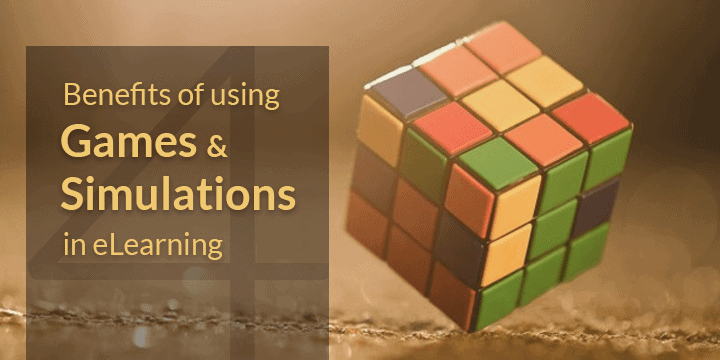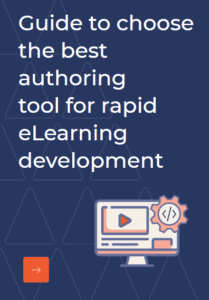Enter. Create an Account. Login. Start. And that’s when the Game Begins.
Objective: To Understand the benefits of games and simulations in eLearning.
This presented on an interesting game panel, say something like the image below, piques your interest, right?
This is curiosity, a self-developed interest is what eLearning games offer. Then what about simulations? But, before getting into more details, let’s understand what Games and Simulations stand for in an eLearning environment.
According to Wikipedia, Learning games or educational games are games designed to help people to learn about certain subjects, expand concepts, reinforce development, understand a historical event or culture, or assist them in learning a skill as they play.
An Instructional Simulation, also called an educational simulation is a simulation of some type of reality (system or environment) but which also includes instructional elements that help a learner explore, navigate or obtain more information about that system that cannot generally be acquired from mere experimentation.
Plain definitions right. But imagine, a learning environment so real that the learners can explore, experiment, learn and re-learn. Games and simulations in eLearning deliver such flexibility. However, most organizations value it just in terms of the cost (which may vary depending on the complexity of the concept, realism etc.), which however can be almostat par with that of any custom eLearning development. However, while weighing the cost with the benefits the latter often triumphs and to know why, let’s take a look at some of the key benefits.
- Motivates the Learners-Paves the Path Towards Self-Paced Learning
While the term game in itself tends to be motivational, a well-designed game interface intrigues the learners, the same applies for simulations. Add to this a good narrative or scenario, and learners themselves take the initiative to learn. To the millennials, the gamers, the tech savvy, learning becomes an extension of the environment they are accustomed to. This gives rise to a culture of self-paced, self-driven learning. - Experiential Learning-Allows Learners to Explore and Experiment
Games and Simulations in eLearning usually replicate realistic situations which may be otherwise dangerous, allowing the learners to logically analyze the situation without endangering themselves. Examples for this are the Flight simulations used to train Pilots and the strategy games used in Military training. The learners hence can explore real scenarios, experiment with various solutions and learn through their mistakes without causing any physical damage. - Provides Better Freedom-Better Clarity about the Learning
As in any game/simulation the ones in eLearning too begin with a scenario that outlines the goals, the tasks at hand etc. This approach allows the learners to know what they are about to undertake and gives them to decide the next course of action. The upfront information also keeps the learners up-to-date about the need for the learning strategy and the expected outcomes. - Multiple Modes for Evaluation-Gives a Holistic Idea about Effectiveness
Games and simulations can not only include the traditional methods of evaluation like quizzes, open questions, MCQs etc. but can also be used to analyze the choices, the general learning pattern/approach etc. Evaluation can also be done at psychological levels (behavioral changes) depending on the learning requirement.
While traditional training methods often tend to be passive, eLearning offers a more dynamic and interactive way of learning, and more so with the help of learning games and simulations. Both tend to keep the learners more engaged through interactions. The use of actual branched scenarios, visual graphics etc. creates an enhanced connect with the content, and provides a virtual space for learning. A well-designed learning game/simulation can take learning to the next level, increase retention and eventually enhance the organizational performance.



